
Guests
- Brad Lichtensteindirector of As Goes Janesville, a new documentary about Janesville, Wisconsin, which is the hometown of seven-term Republican Rep. Paul Ryan, Mitt Romney’s newly named vice-presidential pick. The new documentary will air on the PBS series Independent Lens this fall. Lichtenstein is an award-winning filmmaker and the president of 371 Productions.
With Republican Rep. Paul Ryan joining the Republican ticket for the White House, his hometown of Janesville, Wisconsin, is now in the national spotlight. Thousands have struggled with unemployment in Janesville since General Motors shut down its century-old plant there in 2008, causing mass layoffs. As the town tries to get back on its feet, Ryan has said Janesville has become a microcosm for the economic woes facing the nation. But much of its economic recovery is in fact due, in part, to money from President Obama’s stimulus package and other federal grants. We speak to Brad Lichtenstein, director of the new documentary, “As Goes Janesville,” which follows the lives of laid-off GM workers who try to reinvent themselves through federally funded job training programs or by moving to work at other GM factories that stayed open after the auto industry bailout. We also play excerpts and outtakes from the film, including interviews with Ryan that did not make the final cut. [includes rush transcript]
Transcript
AMY GOODMAN: We’ll continue that discussion on Syria tomorrow. But right now we’re going to turn to Wisconsin, to Representative Paul Ryan, the conservative economic philosophy he brings as Mitt Romney’s vice-presidential pick, the vision on display in Ryan’s hometown of Janesville, Wisconsin, where thousands have struggled with unemployment since General Motors shut down its century-old plant there in 2008, causing mass layoffs. As the town tries to get back on its feet, Ryan says Janesville has become a microcosm for the economic choices facing the nation.
REP. PAUL RYAN: What’s neat about Janesville is you’ve had lots of entrepreneurs over time who have started all these great businesses, from nothing to something, to become great employers. That’s kind of the story of America. The story of America are people who are seeking to reach their potential, who are taking risks, starting businesses, and then turning them into really fruitful enterprises and creating jobs and opportunity for other people, who then go out and do the same. That’s the success story of America itself. It’s the story of Janesville. Question going forward is, are we doing what we need to do to keep that dynamic entrepreneurial society and economy going? Are we going to be a culture, an economy and a country and a town of free enterprise, of risk taking, of hard work, of achieving and producing? Or are we going to think that those great days of our country and our town are behind us, and we have to start managing the decline, we have to go down toward what I would call more of a western European, cradle-to-grave social welfare state?
AMY GOODMAN: Vice-presidential candidate Ryan, now the GOP vice-presidential candidate. That clip from the outtakes of a new film called As Goes Janesville, which Ryan never actually made it into. Instead, the film follows the lives of laid-off GM workers who try to reinvent themselves through federally funded job training programs or by moving to work at other GM factories that stayed open after the auto industry bailout.
It also follows a parallel track of local business leaders aligned with Republican Governor Scott Walker as they try to promote a pro-business agenda they believe will woo new companies to town. In this clip from As Goes Janesville, we hear from laid-off GM worker Gayle Listenbee’s family. In order to keep working, she applied for work at a GM plant in Fort Wayne, Indiana, almost 300 miles away. When she got the job, she made the hard decision to transfer there, leaving behind her husband and two young daughters. This clip begins with Gayle’s husband. Then we hear from Gayle while she works on the assembly line. It ends with Governor Walker coming to meet with local business leaders.
TIM LISTENBEE: They have a parent at home that does everything. I’m Mr. Mom. On an average day, I’m up 5:30, iron their clothes the night before, make sure all their homework is done. The only luxury is I don’t have to go to work and I’m retired. I was granted disability through General Motors. I was carrying some doors from the paint department back down to the body shop, and I slipped on some substance. I’ve got a prosthetic ankle. So they reattached that. Take pride in combing their hair and making sure that they go to school and they’re presentable, just as if their mom was at home. All right, little girl. Be good. Love you.
DAUGHTER 1: Bye.
TIM LISTENBEE: See you 11:30. Whatever God has in His plans for us, we’ll survive. We always do.
GAYLE LISTENBEE: I’d switch places with him in a minute. If I could do what he’s doing, I’d do it, and I’d send him to Fort Wayne. The automotive industry, we’re the middle class. Unskilled labor at a decent wage, where else is it? If the middle class was still buying houses and fueling the economy, we wouldn’t be in a recession, because the rich still got money, and the poor never had it.
Hey, baby! How are you?
DAUGHTER 1: Good.
GAYLE LISTENBEE: How’s [inaudible]?
DAUGHTER 1: Good.
GAYLE LISTENBEE: I hear your—I can feel your heart beating.
DAUGHTER 2: Love you.
DAUGHTER 1: Mom, come out to eat with us!
GAYLE LISTENBEE: It’s good to be home.
DIANE HENDRICKS: Hey, Governor Walker.
GOV. SCOTT WALKER: How are you? Good to see you.
DIANE HENDRICKS: Oh.
GOV. SCOTT WALKER: Thanks for having us.
DIANE HENDRICKS: Thank you for being here.
MARY WILLMER: Hi. Mary Willmer.
GOV. SCOTT WALKER: Good to see you again, yeah. Yeah.
MARY WILLMER: Great time at the mall.
GOV. SCOTT WALKER: Oh, thanks.
DIANE HENDRICKS: Any chance we’ll ever get to be a completely red state and work on these unions?
GOV. SCOTT WALKER: Oh, yeah.
DIANE HENDRICKS: And become a right to work?
GOV. SCOTT WALKER: Well, what—in fact, the big thing we’re—
DIANE HENDRICKS: What can we do to help you?
GOV. SCOTT WALKER: Well, we’re going to start in a couple weeks with our budget adjustment bill. The first step is, we’re going to deal with collective bargaining for all public employee unions.
DIANE HENDRICKS: Right.
GOV. SCOTT WALKER: Because you just divide and conquer. I need lawmakers to vote on it, but the key is, by tying it to the budget, there’s no way to unravel it.
DIANE HENDRICKS: You’re right on target.
GOV. SCOTT WALKER: Good.
MARY WILLMER: That’s what we need.
GOV. SCOTT WALKER: Good.
AMY GOODMAN: That was Wisconsin Governor Scott Walker speaking to Diane Hendricks, a Wisconsin billionaire. Before that was the family of GM worker Gayle Listenbee.
Well, much of the economic recovery in Janesville is due in part to money from Obama’s stimulus package and other federal grants. The Janesville Innovation Center, which aims to support entrepreneurs, was funded in part by a $1.2 million stimulus grant. The federal government is also contributing upwards of $10 million to a Janesville plant manufacturing medical products, a plant that could employ some 150 people. In addition, a major infrastructure project that Ryan has encouraged will be reportedly financed as part of a billion-dollar federal and state highway project.
To talk more about how Congressmember Ryan’s attempts to scale back government’s role in the economy stands in stark contrast to the lived experience of his own hometown, we’re joined by As Goes Janesville’s director, Brad Lichtenstein. The new documentary will air on PBS series Independent Lens this fall. Brad Lichtenstein is an award-winning filmmaker and the president of 371 Productions.
Brad, welcome to Democracy Now! Talk about the significance of your film, especially now with Paul Ryan elevated to the Republican presidential vice-presidential ticket.
BRAD LICHTENSTEIN: Sure. Well, I think that Paul actually got it right. Janesville really is a microcosm of America, that the same struggles that are going on there are happening in communities all over the country. And what you saw was interesting because one of the things that I found is that there’s a divide, I think, in perception, and it sort of becomes a kind of insurmountable gap between those who tend to be more pro-business and paint a very rosy picture of what the future can be, sometimes turning a blind eye to what the reality on the ground is.
One of the people that I filmed that is briefly in the clip that you showed, Mary Willmer, is a banker in town and, along with Diane Hendricks, was co-chair of an economic development group that was largely guided by pro-business principles, or still is, and she always talked about being an ambassador of optimism. Early in the film, there’s a scene where she’s gathered bankers together to talk about how to overcome foreclosures throughout the community. And when one of the bankers says, “I think that there’s a lot more to come,” that it’s going to get worse, she says, “We don’t want to paint a picture of gloom and doom.” And that stands in stark contrast to the kind of experience that Cindy Deegan, one of the workers who goes back to school, only to get a job that’s only 80 percent of her job that she used to have at Alcoa, which made the tire rims for the GM products, or Gayle, as you saw, who has to leave her family behind. There’s another woman, Angie, who also leaves her 18-year-old son behind, and then, when her son gets into a car accident, she has to come home, take care of him, and then loses her job at GM. And it’s actually the union that gets her job back. And so, there’s this—
AMY GOODMAN: I wanted to go, Brad, to Cindy Deegan. She was laid off, as you said, from the Alcoa plant that made tire rims for GM, that closed in 2008 with no option to turn to another Alcoa plant elsewhere. She enlists in a medical lab technician training program funded by a federal stimulus program to send workers back to school. In this clip, we hear her daughters, as well as Cindy herself and her husband.
CHRISTINA DEEGAN: Do you have a chemistry test today, Mom?
CINDY DEEGAN: I have a chemistry test today. I don’t want to talk about it.
Doug’s on disability now. So all we’ve got is unemployment and Social Security. As soon as we’re done with school, our unemployment will be done. Well, that’s got me worried. I always wanted to be a teacher when I was my Sarah’s age, but I didn’t have any financial aid or anything, and I didn’t have the money to go to college. So that’s why I didn’t go to college. I was military for 11 years.
DOUG DEEGAN: Christina’s going to college, or military. Don’t know which yet.
CINDY DEEGAN: I really don’t believe she wants to go. I think it’s just the financial. That’s where—I mean, I will go without before my kids go without. No matter what, my kids don’t have to go in the service just for schooling.
DOUG DEEGAN: No. We’ll be fine.
AMY GOODMAN: There you have laid-off worker in Janesville’s job training program, was funded by a federal stimulus program to send workers back to school. Now I want to turn to an outtake from As Goes Janesville. In this clip, Congressmember Paul Ryan talks about his neighbor in Janesville going to community college to get a new job.
REP. PAUL RYAN: I just talked to another friend of mine who went to Blackhawk Tech to learn HVAC, you know, heating and cooling, got a heating and cooling degree. And now he’s, you know, working for a heating and cooling firm in Janesville, so he could stay home, because he didn’t want to leave within the—he could have left with GM. He could have gone to Arlington. He could have gone to Kokomo or somewhere else, in Fort Wayne, I think. But he went to school because he wanted to stay. So, you’re seeing people who are really deeply attached to the community, who are trying to do everything they can to stay. We ought to make it as easy as possible for them to do that. That’s why our community colleges is a big deal. That’s why Blackhawk Tech, which is a very good technical institute, we need to encourage things like that.
AMY GOODMAN: An outtake of Paul Ryan from As Goes Janesville. We just have 30 seconds, Brad. Can you respond to what he espouses and what’s saving Janesville now?
BRAD LICHTENSTEIN: Sure. Quickly, I want to just point out, too, it was a federal earmark grant, not stimulus funds, that paid for Cindy’s school.
The thing that happens in that clip is that, again, I think, I’m trying to get Paul to be a little bit more nuanced about the situation on the ground for people who are really experiencing job loss, and yet he describes it as a kind of choice. But the truth is, a lot of the workers who were laid off, there are 11,000 dislocated workers and people affected in Janesville, and they didn’t have a choice.
AMY GOODMAN: We’re going to have to leave it there, Brad.

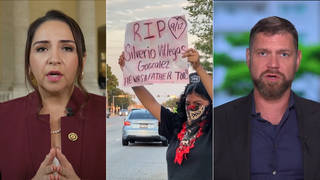
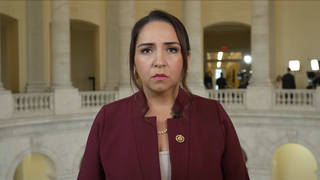
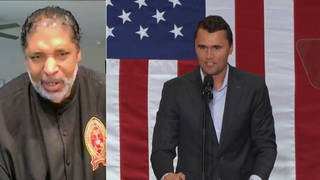
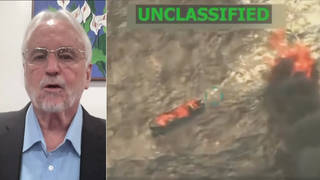
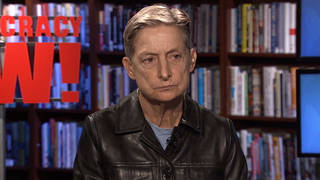
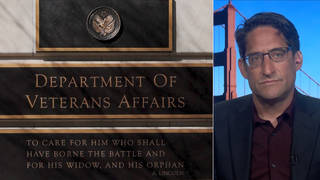
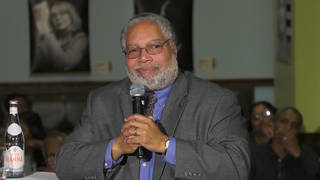



Media Options